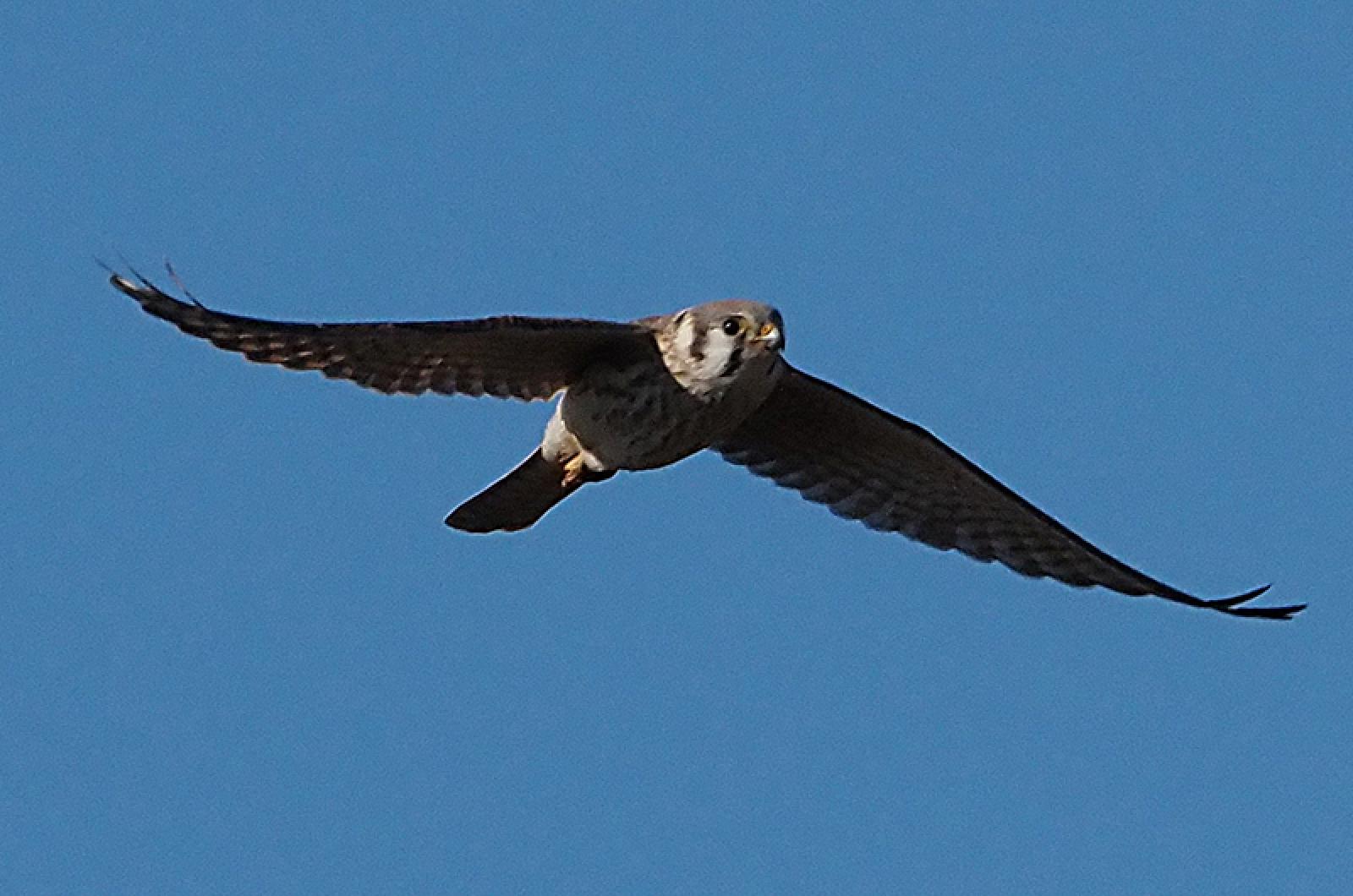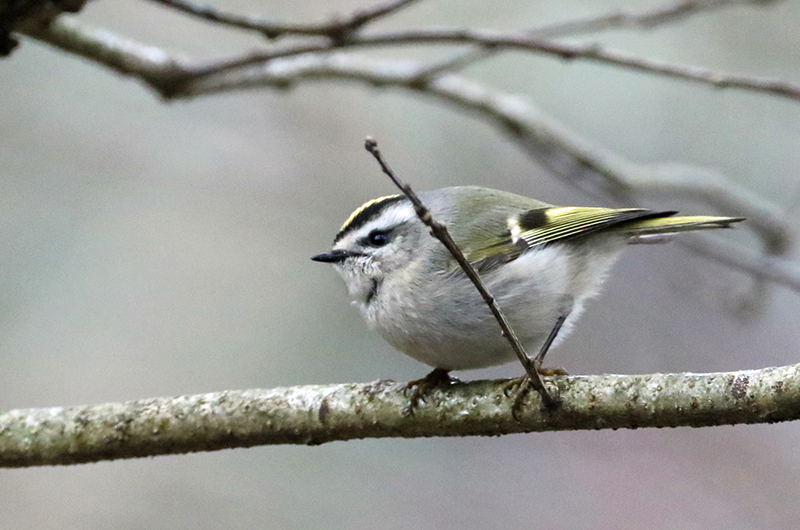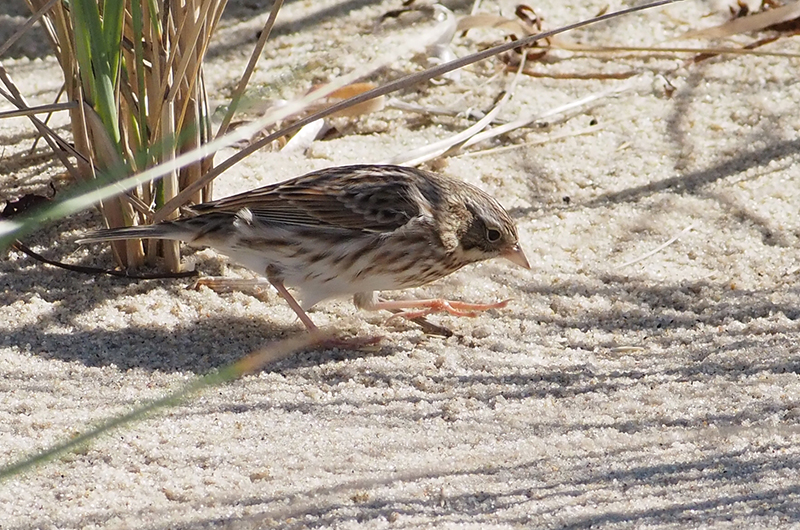Is there a connection between invasive plants and declining songbird populations? Well, most songbirds depend on caterpillars for the vast majority of their breeding season food. The tiny Carolina chickadees, which are slightly smaller than our black-capped chickadees, feed their young between 350 and 570 caterpillars per day. Larger songbirds will consume more than that. These caterpillars live on a select group of native plants that they have been associated with for thousands of years, including oaks, cherries and willows.
We use bulldozers and chainsaws to remove these caterpillar-preferred plants to create nearly sterile lawns that include pretty plants imported from other continents. The problem is that these new plants do not host the caterpillars that birds depend on. Caterpillar populations decline, so birds have to spend more time and travel larger distances to find less-nutritious food. Thus, breeding success is reduced and populations decline.
Fortunately, there is county-specific information to help us plant species that host lots of caterpillars. One of these search tools is the Native Plant Finder produced by the National Wildlife Foundation and available on their website: www.nwf.org/NativePlant Finder. The National Audubon Society has a similar tool known as Plants for Birds www.audubon.org/native-plants. Enter Dukes County, Massachusetts, and these tools will provide a list of caterpillar-friendly native plants.
Bufflehead sightings are eagerly anticipated as they are so much fun to watch. Cynthia Bloomquist, Thaw Malin, Shea Fee and the Martha’s Vineyard Bird Club visited Long Point on Oct. 23 and their highlights were the first bufflehead and the first red-throated loon of the season.
Our winter resident brant showed up at Ocean Park. Bob Shriber found a dozen of them there on Oct. 22 and, the same day, Tony Lima spotted 20 across the road at the town beach. I found 39 grazing in the park on Oct. 24.
The immature snow goose is still there, seen by Bob Shriber and Tony Lima on Oct. 22, and by Matt Pelikan on Oct. 23. On Oct. 25, John Nelson spotted the immature that has been hanging out at Katama Farm for a while.
At the opposite end of the island, harlequin ducks have again returned to our rocky shorelines. Bob Shriber spotted the first of the season harlies at Pilot’s Landing on Oct. 22. Through the winter, they frequent the shorelines from there, around Aquinnah to Squibnocket and Lucy Vincent.
Songbirds are not to be outdone. Susan Whiting spotted an eastern meadowlark in the fields at Quenames on Oct. 20, And on Oct. 21 Shea Fee spotted the first Ipswich sparrow –- a pale subspecies of the savannah sparrow -- at Norton Point. She also spotted northern harrier and both saltmarsh and savannah sparrows. Susan Whiting and Bob Shriber spotted a purple finch at the Gay Head Cliffs on Oct. 24.
Lindsay Allison spotted a hummingbird visiting her feeder on Oct. 18, so she was “glad I left it up and changed the sugar water!“ Please remember that, at this time of year, hummingbirds may be a western stray rather than our ruby-throated hummer, so please taken a picture and send it to me so its identity can be documented.
Susan Whiting and Allan Keith visited Hancock Beach on Oct. 19 and found the lingering Hudsonian godwit, as well as red knot, Bonaparte’s gull, and lesser black-backed gull. Two days later, this intrepid duo spotted a black-billed cuckoo at the cliffs, as well as field, chipping, white throated, and swamp sparrows and palm, yellow-rumped, and prairie warblers.
Lanny McDowell visited Crackatuxet Cove on Oct. 21 and found the lingering Eurasian wigeon as well as three rather late barn swallows and blue-headed vireo. On Oct. 25, John Nelson spotted three golden plovers in with the numerous winter-resident black-bellied plovers at Eel Pond. Matt Pelikan saw a lingering solitary sandpiper alongside the pond at the State Forest headquarters on Oct. 23
Multiple sightings of both ruby and golden-crowned kinglets have been reported. Shea Fee saw both species and a hermit thrust at the Chappaquiddick Community Center on Oct. 19, and again the next day along the Pocha Pond trail with a catbird. Bob Shriber and Susan Whiting saw the kinglets and a hermit thrush at the Gay Head Cliffs on Oct. 24. Morgan Hodgson has golden crowned kinglets at home.
I spotted a brown thrasher, white-crowned sparrow, palm warbler, robins and cedar waxwings at Sheriffs Meadow Sanctuary on Oct. 24. These latter two species have also been consuming the crabapples in my yard. Other white-crowned sparrows have been seen by Allan Keith and Susan Whiting at the Gay Head Cliffs on Oct. 21 and Lanny McDowell at Crackatuxet Pond on Oct. 22.
Katherine Oscar has done a lot of birding this past week. Her highlights include “tons” of yellow-rumped warblers, a kingfisher and a couple of dark-eyed juncos at Felix Neck on Oct. 18, a brown creeper in her yard on Oct. 20, a flock of greater yellowlegs near the Edgartown Lighthouse on Oct. 21, and green-winged teal at Squibnocket on Oct. 22.
Bob Woodruff spotted a flock of Bonaparte’s gulls on the Middle Ground shoals on Oct. 21. Laura Lennihan and Nora Kerrich spotted a wood duck at Felix Neck on Oct. 20.
On the eagle front, Cynthia Bloomquist and Thaw Malin spotted two bald eagles at Sepiessa Point on Oct. 19. And Ebba Hierta observed a peregrine falcon at the Aquinnah cliffs on Oct. 23.
Please email your bird sightings to birds@mvgazette.com.
Robert Culbert is an ecological consultant with Nature Watch LLC living in Vineyard Haven.








Comments
Comment policy »